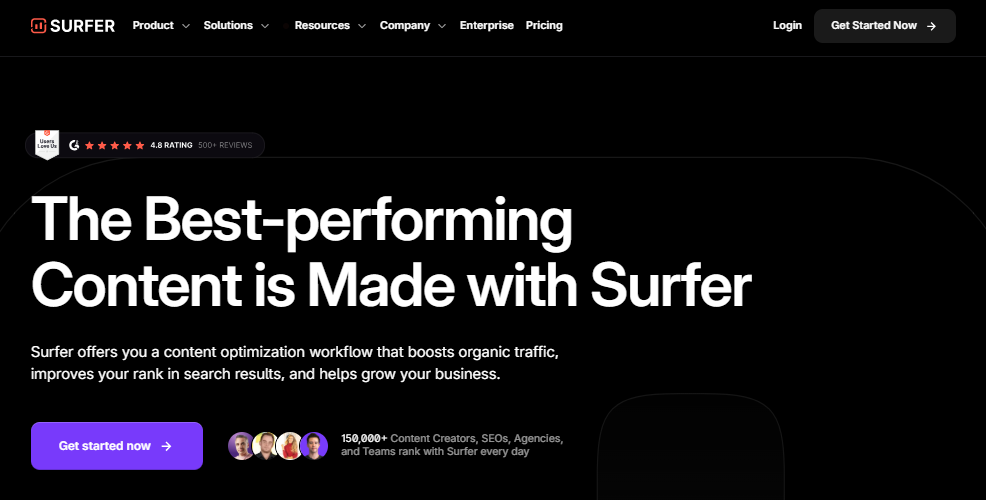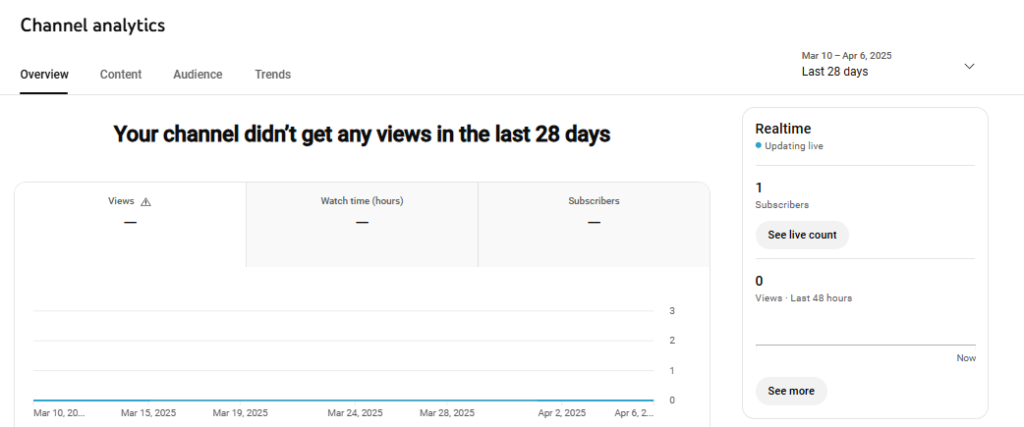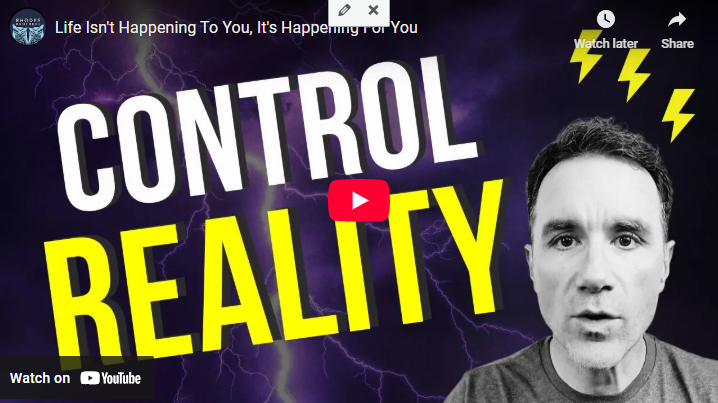For More Free Videos, Subscribe to the Rhodes Brothers YouTube Channel.
“Reality changes as you observe it — and even more so when you observe how others observe it.” — John S. Rhodes, Rhodes Brothers
Let’s start with something that might rattle your brain a little: your audience isn’t the same person at the end of your sales page as they were at the beginning.
Think about that for a second.
That means every time someone interacts with your content — your video, your sales letter, your email, even your customer service — they’re being changed, and not just emotionally. Neurologically. The moment they engage, they’re not just reading or watching — they’re transforming. That’s the observer effect in action… and it’s the secret sauce behind the most effective marketing strategies in the world.
This blog post is going to break down exactly how the observer effect in marketing works, why it’s insanely powerful, and how you can intentionally use it to grow your business, build trust, and increase sales.
You’re going to learn:
- What the observer effect really means in a business and sales context
- How to use it to craft highly persuasive sales pages and videos
- Why launching before you’re ready could actually be your biggest advantage
- And how to turn early feedback into your most profitable marketing strategy
But first, here’s a quote to set the tone from a name you might recognize:
“The greatest discovery of my generation is that a human being can alter his life by altering his attitudes of mind.”— William James
Now, let’s dig in.
TL;DR
- The observer effect means people change as they interact with your content — and so does your content.
- Your customer’s psychology evolves throughout the experience — don’t write static content for a dynamic reader.
- Perfection is the enemy of progress — launch early, gather feedback, and evolve your product with your users.
- Feedback isn’t just criticism — it’s data that can make your product and message unstoppable.
- Use MVPs (Minimum Viable Products) and test groups to refine your offer, fast.
Understanding the Observer Effect in Business
In business, success often hinges on how well you understand your customer — not just who they are, but how they change during their interaction with your brand. That’s where the observer effect comes in. While originally a concept from quantum physics, the observer effect has powerful applications in sales, marketing, and product development. It’s not just theory — it’s a practical lens through which you can view every customer touchpoint to unlock deeper engagement and smarter growth.
What is the Observer Effect?
In physics, the observer effect suggests that the act of observation changes the phenomenon being observed. Now bring that into the world of business, and it means every time someone reads your sales page, watches your video, or interacts with your offer… they’re not the same person by the time they finish.
And neither is your product.
Imagine you’re selling a coaching service or a digital product. The moment someone starts reading your sales copy, they begin to form judgments, emotional responses, questions, and even excitement. They’re being shaped by your content — and they’re shaping you in return with every click, comment, or refund.
John S. Rhodes put it best when he said: “They will change you. They will change your products.”
Let that sink in.
How to Use the Observer Effect in Your Marketing
Understanding the observer effect is one thing — applying it to your marketing strategy is where the real transformation begins. The key is to recognize that your audience isn’t static. Their thoughts, feelings, and decisions evolve with every interaction they have with your brand. And if you’re smart, you’ll evolve your messaging, offers, and even products right alongside them. Here’s how to start doing exactly that.
Step 1: Start With the Ideal Customer Avatar — Then Let It Evolve
You need a clear avatar — that ideal customer who loves your product, has the money to buy, and tells everyone about it.
But here’s the twist: your avatar will change.
As people interact, they’ll give you new insights — through emails, help desk messages, comments, reviews, and even refunds.
Tools to Use:

- Surfer SEO or AnswerThePublic to understand what your audience is searching for
- Typeform or Google Forms to gather initial feedback
- Hotjar for heatmaps and behavior analytics
Step 2: Launch Before You’re Ready
Perfection kills momentum. If you wait until your offer feels “perfect,” you’ll miss the most powerful part of the observer effect: real-world feedback.
Get it out there, even if it’s rough. Test. Listen. Adapt.
Step 3: Use Feedback to Build a Better Experience
When someone asks a question or shares a frustration, that’s gold. Use it to:
- Add FAQs to your sales page
- Create bonus content that solves common problems
- Record a follow-up video to explain a confusing concept
Examples of Effective Feedback Loops
- A refund request that led to a new training module
- A comment that inspired a webinar
- A recurring question that became a full-blown product feature
Step 4: Observe the Observers
This is where things get meta.
Don’t just watch what people do — watch how they respond to others’ responses. This is where virality, community, and rapid growth live.
Example: A YouTube comment section filled with “ENERGY!” after a call-to-action creates social proof and builds momentum. Others see it, feel it, and join in.
Tools to Track This:

- YouTube Analytics
- Facebook Group Insights
- Reddit comments and upvotes
Actionable Steps On How to Leverage the Observer Effect in Business and Marketing
No matter where you are in your business journey — whether you’re just starting out, building momentum, or scaling to new heights — the observer effect can become your secret weapon. Here’s how to put it into action.
If you’re a beginner, the first step is to get clear on your ideal customer avatar. This isn’t just a marketing exercise — it’s about getting inside the head of the person you want to serve. Use simple tools like MakeMyPersona by HubSpot or even a Google Doc to sketch out their age, goals, struggles, and desires. Then, instead of spending months perfecting your product, create a minimum viable product (MVP) — a short ebook, a basic video, or a simple coaching offer. The key is to get it out there quickly. Launch it to a small audience and immediately ask for feedback using a tool like Typeform or Google Forms. Ask things like “What did you love?”, “What confused you?”, and “What’s missing?” These answers will be your roadmap. To go further, install behavior tracking tools like Hotjar or Microsoft Clarity on your landing page so you can literally watch how users interact. Do they scroll all the way down? Do they click or bounce early? That’s the observer effect in motion. Use that data to tweak headlines, add FAQs, or adjust your offer. It’s like having a co-creator in every customer.
For intermediate marketers or creators who already have products or content out there, the goal is refinement. Start by auditing your customer touchpoints. Look at support emails, YouTube comments, or testimonials and notice patterns. What are the recurring questions or objections? These are clues to where your messaging might be unclear or incomplete. Next, try a soft launch of your next product — offer it to your email list or loyal followers as a “beta test” and ask for feedback. Then, dig into emotional triggers. Use analytics tools like YouTube Studio or Meta Insights to see where people are most engaged — what moments spark likes, comments, or rewatches. From there, create responsive content — meaning every major question or concern becomes a new blog post, video, or social post. This not only builds trust, it trains your audience to know you’re listening. Finally, formalize your feedback loop. Set up a recurring monthly survey or start a private community for early testers. Every insight you gather becomes a building block for your next big win.
Now, if you’re a seasoned business owner or expert, it’s time to scale the observer effect across your ecosystem. Start by mapping the entire customer journey using tools like Lucidchart or Funnelytics. Identify key moments where your customer’s mindset shifts — the first impression, the point of purchase, the onboarding stage. These are prime opportunities to tailor your messaging or experience. Next, run A/B tests to see how small shifts in copy, video thumbnails, or email subject lines affect behavior. Tools like Google Optimize or ConvertKit make this easy. Then, use feedback as fuel for growth — if multiple users ask the same question, build a mini-course or upsell around it. Your audience is literally telling you what they want to pay for. Don’t forget to observe your observers publicly as well. Share positive reviews, user-generated content, or community celebrations. This builds trust and amplifies the observer effect through social proof. And if you have a team, train them to watch for feedback too. Create a central place (like Notion or Trello) where support agents, marketers, and product developers can log insights. When your whole team becomes keen observers, innovation becomes second nature.
As a bonus step, make observation a part of your culture. Hold regular “Observation Reviews” where you reflect on what customers are saying, how they’re behaving, and what’s shifting in your market. This habit alone can set you apart from competitors who are stuck guessing instead of listening.
Ultimately, leveraging the observer effect isn’t about being perfect — it’s about being perceptive. It’s about launching, learning, and evolving in real time with your audience. Observe them. Let them observe you. And watch the magic happen.
Common Mistakes to Avoid When Using the Observer Effect in Business
The observer effect can become one of the most powerful tools in your marketing and growth strategy — but only if you use it correctly. Many entrepreneurs, especially creators and marketers, fall into avoidable traps that keep them from fully leveraging its power. Let’s break down the most common mistakes people make and more importantly, how you can avoid them.
Waiting for Perfection — You’ll Never Launch
Perfectionism is often disguised as professionalism, but in reality, it’s procrastination wearing a fancy suit. Waiting until everything looks flawless before launching your product, course, or offer is a fast-track to never launching at all. The observer effect only works if people are actually observing. That means putting your work out there — messy, unfinished, raw and real — so you can start gathering insights and adjusting in real time.
Fix it: Launch a Minimum Viable Product (MVP). This could be a beta version, a pilot group, or a soft release. Use feedback to iterate quickly. Done is better than perfect — because done gets data.
Ignoring Feedback — It’s Not Criticism, It’s Insight
One of the worst things you can do is treat customer feedback like a personal attack. It’s not. It’s free market research. Every confused email, refund request, or “this was helpful but…” comment is data. It’s your audience telling you exactly what they need to feel more confident, more supported, and more likely to buy.
Fix it: Instead of defending your work, get curious. Set up systems to gather and analyze feedback: customer surveys, comment threads, support tickets, or even social media reactions. Create a weekly or monthly “Feedback Review” to log trends and implement changes.
Thinking Your Sales Page Is Static — It Needs to Evolve With Your Readers
Many marketers treat their sales pages like stone tablets — write it once, and it’s done. But your audience changes as they read. Someone scrolling through your headline may be skeptical, but by the time they hit your testimonials, they’re more open. If your copy doesn’t adapt to their emotional and intellectual journey, you lose them.
Fix it: Design your sales page to evolve with your customer’s mindset. Use awareness-based copywriting that shifts from problem identification to solution framing to emotional buy-in. Tools like Hotjar or Microsoft Clarity can help you see where people drop off — and where to improve.
Assuming Your Avatar Never Changes — They Do, and So Should Your Message
Your ideal customer avatar isn’t a fixed character. As your brand grows — and as your audience learns from you — they evolve. Their understanding deepens, their expectations change, and their needs mature. If you’re still marketing to the “beginner version” of your customer six months later, your message will feel outdated or irrelevant.
Fix it: Regularly revisit and update your avatar profile based on real-world interactions. Book sales calls. Run polls. Hang out in your comment sections or private communities. The more you observe, the more accurately you can speak to who your customer is now, not just who they were when you started.
Not Tracking User Interaction — If You’re Not Watching, You’re Missing Gold
If you’re not actively watching how users behave on your site, in your funnel, or through your emails, you’re flying blind. You might be guessing what works — and missing out on huge opportunities to optimize your content and conversions.
Fix it: Equip yourself with tools that let you observe behavior in real-time. Use:
- Google Analytics to track traffic and flow
- Hotjar for heatmaps and session recordings
- Email click tracking to see what calls-to-action resonate
- YouTube Studio to track watch time and drop-off points on your videos
Even better, combine qualitative and quantitative data. Watch what they do and listen to what they say.
Frequently Asked Questions
What is the observer effect in marketing?
It’s the idea that your audience changes while interacting with your content — and that interaction also changes you and your offer.
How can I apply this to my sales page?
Write your sales copy knowing your reader is evolving. Anticipate objections, emotions, and shifts in awareness. Guide them through the change.
Should I wait until my product is perfect?
No. Launch early, get feedback, and evolve. As John S. Rhodes says, “Perfection is failure.”
What tools help me observe user behavior?
Try Hotjar, Google Analytics, YouTube Studio, and even chat transcripts.
How do I know if my marketing is working?
Watch engagement — comments, shares, replies, and refund reasons. That’s where the truth lives.
What if I’m just getting started?
Start small. Launch a test version. Talk to your first 10 customers. Watch, listen, learn.
Can the observer effect improve customer retention?
Absolutely. When people feel heard and see their feedback reflected in updates, they become loyal fans.
How do I build products using the observer effect?
Use early adopters as co-creators. Build with them, not just for them.
Is this only for digital products?
Nope. Works for physical products, services, coaching, books — anything people interact with.
How do I avoid overwhelm with all this feedback?
Filter by patterns. One piece of feedback might be a fluke. Ten people saying the same thing? That’s your next move.
Turning Observation Into Opportunity
The observer effect isn’t just a physics concept — it’s a powerful lens for building, refining, and scaling your business. Every interaction is a chance to evolve — for you and your audience.
You don’t need a perfect product.
You just need a minimum viable product and a willingness to watch, listen, and adapt.
So here’s your next step: Launch something. Anything. Today.
Ask for feedback. Watch how people respond. Then evolve.
Your audience is already changing. Will you change with them?
Thanks so much for joining us on this deep dive into the observer effect and marketing. If you found this valuable, be sure to subscribe to the Rhodes Brothers YouTube Channel where they share powerful insights like this every week to help you master your mindset, business, and marketing.
Resource List
Books
- Start With Why by Simon Sinek
- The Lean Startup by Eric Ries
- Influence: The Psychology of Persuasion by Robert Cialdini
- Hooked by Nir Eyal
- Made to Stick by Chip & Dan Heath
Courses & Podcasts
- Marketing Secrets Podcast by Russell Brunson
- Smart Passive Income Podcast by Pat Flynn
- Copy Posse Launch Files by Alex Cattoni
Tools
- Hotjar – for heatmaps and behavior tracking
- Google Analytics – for traffic and funnel insights
- Typeform – for gathering feedback
- Descript – for editing and analyzing video feedback
- Notion – for organizing customer feedback and product iterations
- Surfer SEO – for writing content that aligns with search intent
- Trello or ClickUp – to manage your product development workflow





